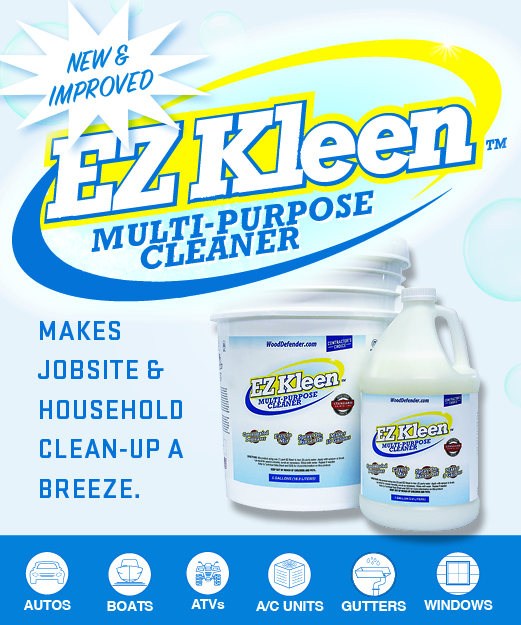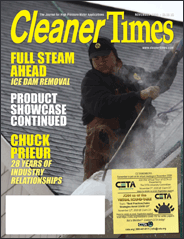
Coils: Dos and Don’ts
by Diane Calabrese | Published August 2025

The dos and don’ts surrounding coils can be compressed.
Do give coils the attention they require. Don’t neglect coils.
Simple enough. But as with most simple explanations, it’s a lot more complicated. It’s somewhat analogous to the big bang theory of the origin of the universe.
Coils may not be as poorly understood as the beginning of our universe, but they are not as well understood as they could be. Let’s start with the basics.
“When it comes to equipment maintenance, the coil is easily forgotten or ignored,” says Calvin Farley, vice president of Farley’s Inc in Siloam Springs AR. “It is also one of the most expensive components to replace.”
So, what are some ways to ensure that a coil reaches its maximum lifespan? “Winterizing is critical,” say Farley. “Either use antifreeze – recommended – or compressed air to blow the water out.”
Outside of preparation for winter, there’s plenty to be done. “When chemicals are run through a coil, a thorough rinse is a must,” says Farley. “Even diluted chemicals left in the coil can cause damage.”
Even without the advent of winter or the use of chemicals, coils must be given attention. “A great preventative maintenance procedure for coils is regular descaling,” says Farley.
“We used to recommend descaling annually but that may not be often enough for people making a living with their equipment,” explains Farley. “One thing is sure, when the coil finally plugs up, it’s too late and the coil will need to be replaced. A product we trust is KO Manufacturing’s #110 Koil Kleen. Again. Rinse thoroughly.”
Koil Kleen is a concentrated acid powder formulated to dissolve lime and scale buildup. Coupled with a corrosion inhibitor it protects from subsequent corrosion.
Do follow all safety procedures when using an acid-based product. That includes ensuring the dilution of the product is fully accomplished after it is used and having SDS available.
Finally, Farley says there’s one very big don’t. “Never use RO [reverse osmosis] water, it will erode the inner walls of the coil pipe and present as pin holes.”
Erode the inner walls? Yes, because RO water has been ridded so successfully of minerals that it will be adept at taking them into solution if given opportunity. And there’s plenty of opportunity when the water meets the copper or aluminum of a coil.
More to do
Many manufacturers of hot-water pressure washers recommend giving a unit some time to cool down after each use and emptying the hose. It’s another mechanism for helping to reduce the buildup of scale.
And while residue building up on the inside of a coil may get most of the attention, it’s worth remembering that the surface of a coil should be clean. If soot builds up from a less-than-optimal burn it can reduce the efficiency of heat exchange by acting as an insulator. To be sure, the soot buildup is itself an indication that the burner needs attention.
As with any piece of equipment, the best approach is routine maintenance. Lax maintenance can lead to such significant scaling that the aperture can be reduced enough to increase pressure. A combination of hot water and pressure that exceeds the recommended range for a hose or fitting may lead to a hose rupture or leaks. Besides taking a toll on the machine, there’s a danger to the operator.
Even an operator who scrupulously follows a preventative maintenance plan should respond to changes in the performance of a machine. Changes such as a relief valve blowing or reduced water pressure or clogged nozzle should be given immediate attention. The cause of the problem very often is scaling.
Put on the do side of the coil ledger the need to seek out and understand the character of the water where the pressure washer is being used. In many places the water is so laden with calcium, magnesium and other metals, it’s labelled hard. Know where water ranks on the hardness scale – soft to very hard.
We cannot simply ignore what we can’t see. We know from our experience with immersion heaters that accumulate scales and cloudy glassware how quickly hard water can extract a tool.
Do keep hard water in mind. The Water Quality Association uses a hardness scale established by the American Society of Agricultural Engineers, ASAE, which is now the American Society of Agricultural and Biological Engineers, ASABE. According to the ASAE scale, hard water has 120-180 parts per million (ppm) of dissolved compounds. Very hard water has more than 180 ppm and soft water less than 17 ppm.
The U.S. Geological Survey, USGS.gov, provides maps that detail where regional water fits on the hardness spectrum. Most of us have a good idea where our water fits based on the amount of sediment left on glassware, or the close look we have had at the significant scaling on pipes removed by the local water authority.
We all have an intuitive grasp of the havoc to be wrought by clogged or soot-covered coils. And we realize the expense entailed to replace a coil is significant. Yet there’s a tendency with all machines that seem to indicate to us they need attention to try to push them a bit more.
A wait-and-see philosophy too often becomes a wait-and-irrevocably damage a coil reality. Thus, the biggest ‘do’ with coils stands as the first cited: Do give them the attention they deserve.
Do learn more
Better understanding of coils will naturally lead to more innovation. A coil efficiently packs a lot of surface area into a small space. It’s an ingenious design.
Is the horizontal (spiral) layering of a spiral coil the most efficient? Alkota Cleaning Systems, Inc. in Alcester, SD, which makes its coils in house, is one company that uses a helical coil, which it likens in form to a stretched spring. The additional space around the coil improves airflow and ventilation.
The results achieved with the helical coil include a safer machine (cool to touch), more efficient combustion, and no buildup of soot. (See https://alkota.com/the-alkota-coil/.)
In many ways, a hot water pressure washer is in part a small water heater riding around on a trolley. And just as makers of water heaters aim for greater efficiency and safety with every permutation, so, too do makers of hot water pressure washers.
The coiled heat exchanger in an indirect water heater, one in which a burner heats a liquid in the exchanger/coil that in turn heats the water in the surrounding tank, has much in common with the coil in a hot-water pressure washer. Added insulation is a feature of the newest indirect water heaters and we should expect more insulation to give a boost to pressure washers (hot and cold) in future.
We came away from research for this article with a deep desire to find a taxonomy of coils. Yes, the types and uses of coils, the materials used to make coils, the sizes of coils, etc. are all available.
But a comprehensive guide to coils is still wanting as far as we can determine. That’s probably because coils are at the core of so many industrial processes. And coils are part of HVAC and refrigeration systems. Coils are everywhere. (Heat exchangers are everywhere, so that’s a sort of given, but think food processing facilities to power plants and everything beyond and in between).
And coils are probably as neglected in many home HVAC units as they are in pressure washers. Benign neglect – a definite don’t. (Have the fins on the HVAC been cleaned recently – and routinely?)
Housing on coils takes two distinct forms: slide out (easier to remove and clean) and airtight. Airtight is necessary if there is a risk of contamination between an air stream and the environment.
There’s some standardization in the material used for coils and their ancillaries. Copper for tubes, aluminum for fins, galvanized steel on hot water coils, stainless steel on chiller coils – that’s a starter list.
Coils are used to heat (water or air) and to cool. They are not infinite in type, but they are extremely varied. The one thing to expect in the realm of coils is that they will continue to be improved, so that they provide for ever more efficient service and realize greater longevity.
Clean coils are essential to minimizing the use of fuel (or electric power). The best hot-water machines are built to gauge heating in the context of the ambient temperature. If the balance is skewed, efficiency is reduced.
Efficiency is part of every design-build effort in 2025. Expect more efficient hot-water pressure washers. The gains made locally by one contractor using a well-maintained machine add to great savings in energy when multiplied across many machines.
Thus, even a contractor who has no worries about meeting the costs of diesel or gas fuel or electric power, might think about the link between a machine performing at the highest possible efficiency and the health of the environment. Moreover, money saved on powering equipment can be put to use elsewhere.





